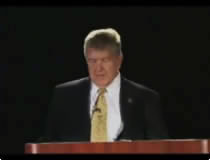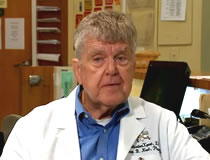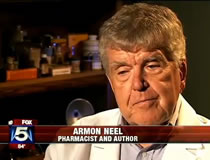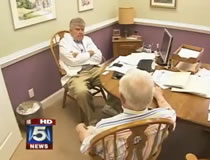July 7th, 2015
Narcolepsy and Autoimmune Response: The Missing Link
Narcolepsy and Autoimmune Response: The Missing Link
July 6, 2015
Narcolepsy and Autoimmune Response: The Missing Link Narcolepsy and Autoimmune Response: The Missing Link
Narcolepsy is a lifelong neurological disorder characterized by impaired regulation of sleep-wake cycles and several distinct symptoms, including excessive daytime sleepiness — the most common symptom of the disorder — and cataplexy, a sudden muscle weakness. Symptoms may also include hallucinations, sleep paralysis, and hallucinations while falling asleep.1 These bouts are “often triggered by sudden, strong emotions such as fear, anger, stress, excitement, or humor,” according to the National Institute of Neurological Disorders and Stroke.1 It is estimated that narcolepsy with cataplexy accounts for 70% of cases, affecting approximately one in 3,000 Americans.1 (There are also patients who have narcolepsy without cataplexy.)
It is established that people with narcolepsy lack the cells that produce hypocretin (also called orexin), a neurotransmitter that helps regulate sleep-wake cycles. The relationship is clear and simple: “If you don't have these, you have narcolepsy,” says Emmanuel Mignot, MD, a professor of psychiatry and behavioral sciences at Stanford University and director of the Stanford Center for Sleep Sciences and Medicine.
Mignot was the first to discover that narcolepsy is caused by the loss of hypocretin. What causes this loss, however, is still unknown, though overwhelming evidence points to an autoimmune response as the culprit. “There are absolutely clear factors indicating that narcolepsy is an autoimmune disorder,” said Mignot. One is the presence of a genetic predisposition to autoimmune disease among people with narcolepsy, particularly involving the human leukocyte antigen (HLA ) system, which produces molecules in white blood cells that are important for coding the specificity of the immune response. “The same genes that predispose individuals to autoimmune disease – especially HLA – also predispose them to narcolepsy,” said Mignot. “One-hundred percent of narcolepsy patients have a very specific HLA type.”
In addition to genetic predisposition, there must also be a triggering event for the onset of the disease for it to be considered autoimmune related In response to the triggering event, the immune system initiates a normal response, but then starts to cross-react and attack its own cells, thereby damaging tissues and creating a vicious cycle of ongoing reaction and damage.
The presence of a triggering event for narcolepsy became clear when researchers in multiple countries found an increased incidence of narcolepsy following vaccinations with Pandemrix against the H1N1 strain of influenza in 2009 (also known as “swine flu”). Results ranged from a three-fold increased risk in Sweden2 to a more than twelve-fold increase in Finland,3 with elevated rates also found in countries like England,4 Norway,5 and France.6 (The vaccine was not used in the United States, and a study by the Centers for Disease Control did not find an increased risk linked with flu vaccines used in the U.S.7)
The disease is not limited to the vaccine but is also linked to the flu itself. A 2011 study that Mignot co-authored, published in the Annals of Neurology, showed a three-fold increase in narcolepsy onset in China following the 2009 flu season. One telling feature is that narcolepsy almost always starts in spring or summer and rarely during winter, said Mignot, which fits the timeline of the infection-to-autoimmune response cycle. This pattern suggests that patients get infected – or vaccinated – during the winter, and then their immune system begins to have a normal reaction but eventually becomes abnormal, killing hypocretin-producing cells, leading to the appearance of narcolepsy symptoms in spring or summer.
There is one missing link that will provide “final proof” that narcolepsy is indeed an autoimmune disease. “We need to find antibodies or lymphocytes that attack and kill hypocretin cells in the brain,” said Mignot. Researchers need to prove that the immune system is attacking itself in this process.
“My opinion is that it's probably the immune cells rather than antibodies.” Without that missing piece, narcolepsy does not yet meet all the criteria to be officially called an autoimmune disease, “but if you ask most doctors and others in the field, it is recognized” as such, said Mignot. Once they are able to prove this final piece, “then there will be zero doubt.”
Treatment of narcolepsy currently consists of drugs to help patients stay awake and to regulate sleep, but these do not target the shortage of hypocretin. Future research should address this.
“We have to find a medication that mimics orexin, which would be like giving insulin to a diabetic” said Mignot. “But we also need to try to prevent the immune damage that occurs in the first place.”
References
National Institutes of Health: National Institute of Neurological Disorders and Stroke. Narcolepsy Fact Sheet. Retrieved on June 26, 2015 from http://www.ninds.nih.gov/disorders/narcolepsy/detail_narcolepsy.htm.
Persson I, Granath F, Askling J, et al. Risks of neurological and immune-related diseases, including narcolepsy, after vaccination with Pandemrix: a population- and registry-based cohort study with over 2 years of follow-up. Journal of Internal Medicine; 2014; 275(2):172-90.
Nohynek H, Jokinen J, Partinen M, et al. AS03 adjuvanted AH1N1 vaccine associated with an abrupt increase in the incidence of childhood narcolepsy in Finland. PLoS One; 2012; 7(3):e33536.
Miller E, Andrews N, Stellitano L, et al. Risk of narcolepsy in children and young people receiving AS03 adjuvanted pandemic A/H1N1 2009 influenza vaccine: retrospective analysis. BMJ; 2013 Feb 26;346:f794.
Heier MS, Gautvik KM, Wannag E, et al. Incidence of narcolepsy in Norwegian children and adolescents after vaccination against H1N1 influenza A. Sleep Medicine; 2013; 14(9):867-71.
Dauvilliers Y, Arnulf I, Lecendreux M, et al. Increased risk of narcolepsy in children and adults after pandemic H1N1 vaccination in France. Brain; 2013; 136(Pt 8):2486-96.
Duffy J, Weintraub E, Vellozzi C, et al. Narcolepsy and influenza A(H1N1) pandemic 2009 vaccination in the United States. Neurology; 2014; 83(20):1823-30.
Han F, Lin L, Mignot E, et al. Narcolepsy onset is seasonal and increased following the 2009 H1N1 pandemic in China. Annals of Neurology; 2011; 70(3):410-7.
- September 20th, 2014
FDA Panel Backs Limiting Use of Low-T Drugs (PLEASE READ)Read - June 1st, 2015
What Metformin Does to WildlifeRead - August 18th, 2012
Thick Cortex Offers Clue to Better MemoryRead - August 30th, 2012
Smoking Cessation Lowers Risk of Brain BleedRead - November 26th, 2013
FDA lifts some safety restrictions on GlaxoSmithKline's AvandiaRead
Geriatric Nutrition
Without good nutrition, positive drug therapy outcomes are very difficult to obtain, For the best in Geriatric Nutritional Information
Find out more Optima SolutionsContinuing Education
Each month we will post an analysis of specific aspects of government long-term healthcare regulations.
Find out more


